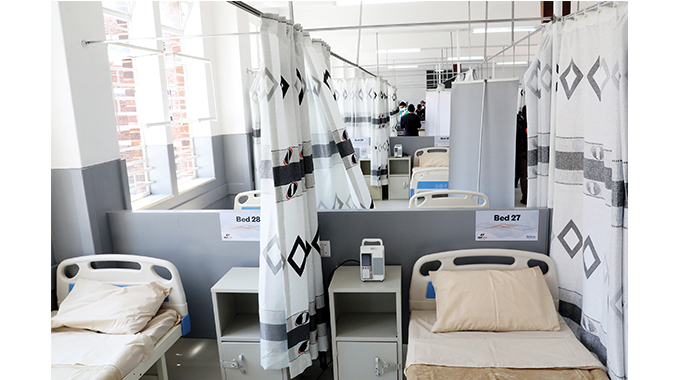COMMENT: Greater things promising to come in the health sector

THE return of Government nurses to their workstations after close to three months on strike, and the refurbishment of a ward at Mpilo Central Hospital could be a signal of greater things to come in the health sector.
Striking nurses returned to work this month following a decision by their representative body, the Zimbabwe Nurses Association (Zina), to give dialogue a chance.
The health workers had declared incapacitation on June 18 but reversed their decision after engagements with the Minister of Health and Child Care, who is also the country’s Vice-President, Cde Constantino Chiwenga.
The strike had come at a critical time when the country — like the rest of the world — has been fighting the Covid-19 pandemic.
At critical institutions like Mpilo Central Hospital, a strike easily affects health delivery on a national scale.
There are five central hospitals in Zimbabwe — Parirenyatwa, Sally Mugabe, Chitungwiza, Mpilo and United Bulawayo hospitals — strategically positioned in the country’s two major cities for a smooth referral chain.
Mpilo is a 1 000-bedded hospital. It is a major paternal centre which serves the population of Bulawayo Metropolitan Province, Matabeleland North and South, Midlands and Masvingo Provinces. It is also a teaching hospital for the National University of Science and Technology (Nust), and has strong links with the University of Zimbabwe (UZ) and several other academic institutions.
It also employs over 2 300 staff across its services.
Now that nurses are back at work, they need equipment and infrastructure that will help in saving lives.
Yesterday we reported that two telecommunications giants NetOne and TelOne refurbished a 35-bed ward at Mpilo as part of the $10 million project to help the Government fight Covid-19 at public institutions.
The $10 million was set aside last April by the two companies to refurbish Mpilo, Beatrice Infectious Diseases Hospital and Sally Mugabe Hospital.
The ward B5 investment is said to be the biggest ever at Mpilo and will enable members of the public to access state-of-the-art monitors which will enable medical personnel to detect patients’ blood pressure, temperature and pulse from the same machine which is quicker than the traditional method of using different types of equipment.
Part of the refurbishment also includes new bedding and linen. Now with grey and white walls and new curtains, B5 which is mainly for men, will be reserved for Covid-19 patients if the need arises.
The two companies also replaced all sinks, taps, bath tubs and tiled the floors.
Before the refurbishment, the ward which is part of the 10 other wards within the main hospital built in 1958, had cracked floors, old bath tubs, sinks and taps which were difficult to repair due to resource challenges.
Thanks to NetOne and TelOne, nurses at Mpilo will find their work much easier, while patients will be more comfortable.
“Mpilo Central Hospital thrives to be the centre of excellence in the provision of a holistic health service as well as Training and Research opportunities in Zimbabwe, the southern Africa,” reads the hospital’s vision on its website.
This vision is now attainable. With more support from the corporate sector, Mpilo can easily become the centre of excellence it has always strived to be.
We applaud NetOne and TelOne and call on more corporate players to join the two telecoms companies in improving the country’s health sector and saving lives.












Comments